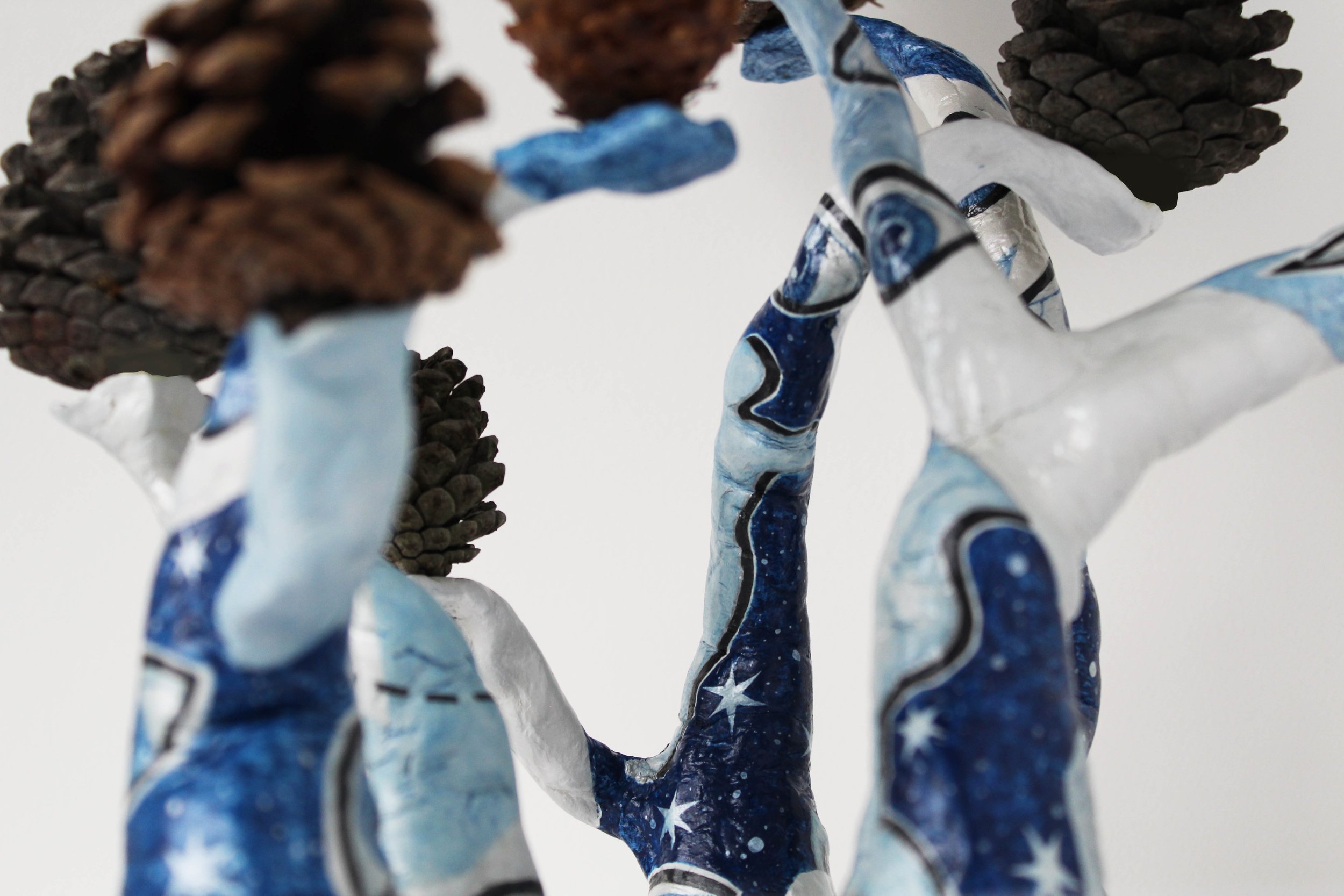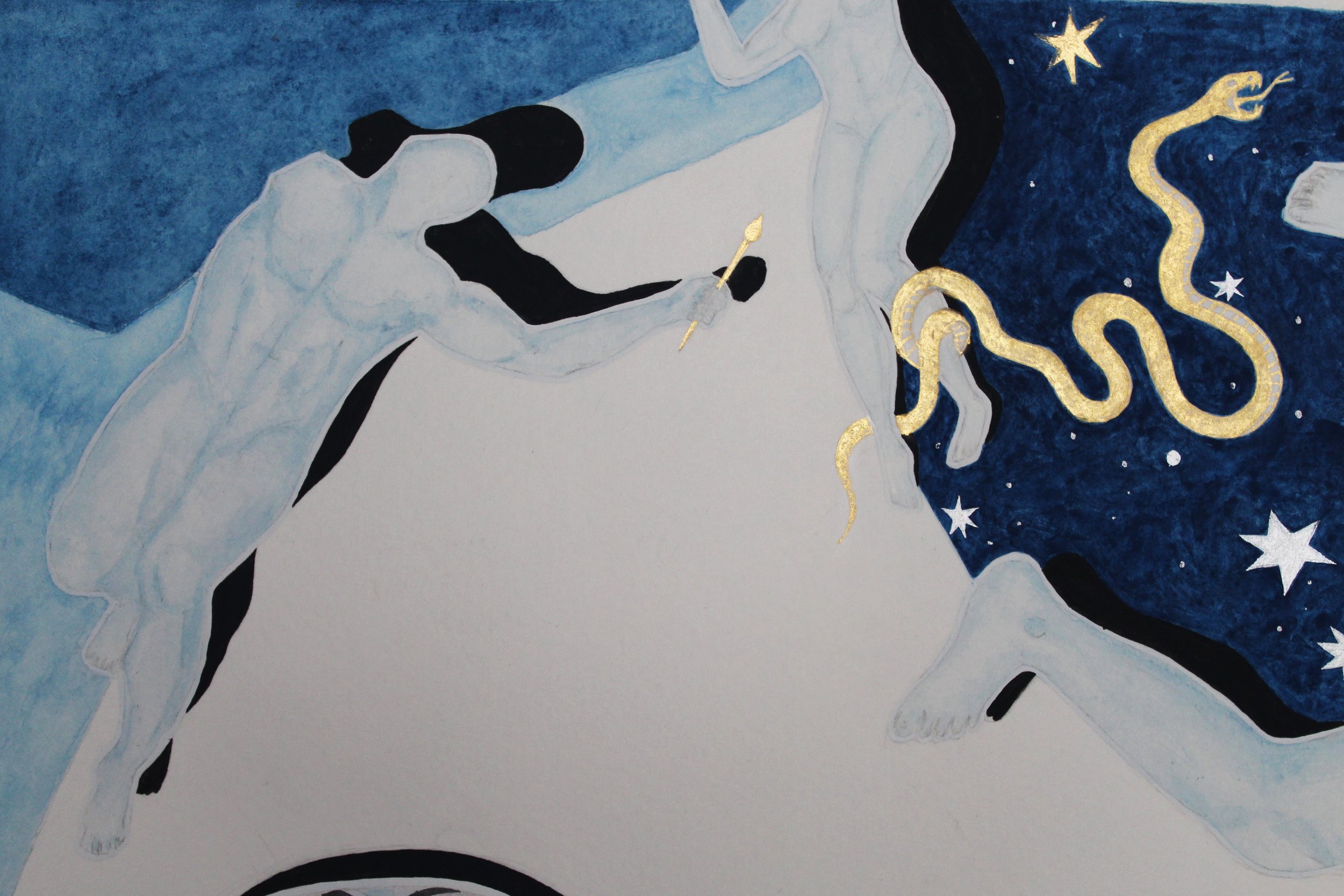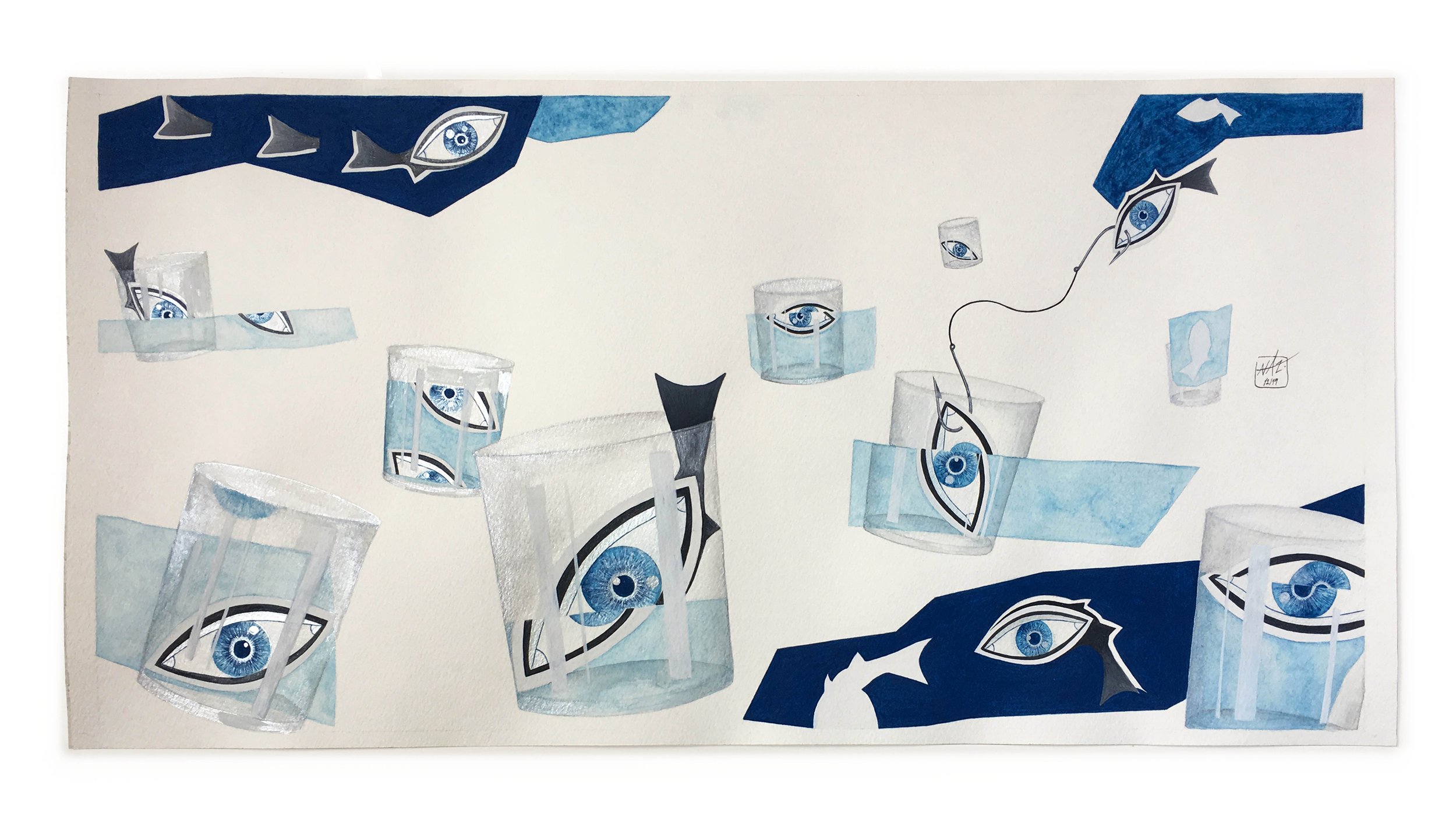Indigo conveys integrity and stimulates creativity and intuition. Representing the Third Eye Chakra, indigo is the color of deep inner knowing, contemplation, and wisdom. It carries higher spiritual vibrations.
INTO THE BLUE series is a pilgrimage in which the intention is to explore inner wisdom in a simple, unadorned manner.
Pinecone Holder
2019
Indigo, watercolor, glaze on clay, pinecones, wire
5.5X5.5X5.5 & 8X9.8X7.5 in (14X14X14 & 20X25X19cm)
"Pine Cone Holder" is crowned with pinecones, which represent the ultimate goal, order, and perfection. "Each bract on the pine cone lies on the intersection of two spirals that wind in opposite directions around the cone from pole to pole." The arrangement of its scales follows the Fibonacci sequence. It is believed that "the cone's slow ripening and opening to release the seeds came to stand for the expansion of consciousness." Therefore from bottom to the top, this piece depicts the quest for order from chaos and growth from imperfection to perfection. This work also follows the principle of the Kundalini system. Kundalini is a Sanskrit term that literally means coiled one or coiled serpent. The aim is to awaken the coiled primal life force residing at the base of the spine. Pine Cone Holder, is a tool for contemplation. It cherishes movement, honors sacred geometry, and reminds being conscious.
Genesis
2019
Indigo, gold, and watercolor on paper
24 X 18 in (61 X 45 cm)
Jean-Pierre Vernant, who devoted himself to the study of Greek mythology, states that the history of religion started with the disintegration of the earth and the sky. These realms used to be united; human and divine were intimately connected. The separation of the earth and sky started a cosmic beginning.
This piece shows the moment of separation, unfolding the realms of the sky, earth, and the underworld. In this chaotic depiction, there is no hierarchy. Movement is towards all directions and the viewer cannot decide whether he/she is above or below. In this new setting, the heavenly bodies hold symbols that represent either consciousness or sacredness which tells us that they are still part of the divine.
Tearscape
2019
Indigo, watercolor, and gouache on paper.
23 X 12 in (60 X 30 cm)
'Tearscape’ reflects the melancholic reactions given to different situations. The color blue ironically symbolizes both hope and sadness. Each glass resembles an incident and the teardrops in the glass reflect the amount of reaction we give. Situations can be deceiving as the reflection on a glass, or refraction in water. These illusions can be surpassed by consciousness. 'Tearscape’ points out the reality beyond what is seen and underlines the fact that with a new perspective, one can attain pure insight and ease.
Yoni and The Golden Pinecone
2019
Indigo, gold, and watercolor on paper
14 X 20 in (50 X 35 cm)
The picture shows a seated woman with her legs wide open. She has a mature, golden pinecone in her hand and is pregnant with another. Pinecones have a deep symbolic meaning in many cultures. Pinecones were regarded as fertility symbols and frequently used in Assyrian reliefs. It represents vital force and divinity. Pinecones are the Masonic emblem of enlightenment. In Christian symbolism; they were closely related to the tree of life. Pinecones are also mathematically significant. The arrangement of its scales follows the Fibonacci sequence. The picture shows the embryonic pinecone resting in the woman’s uterus. Uterus, in other words, Yoni is a Sanskrit word meaning, “divine passage” or “sacred temple”. According to Hindu philosophy, the child was considered to be born from a yoni of stars, the passage of stars that are effectively the constellations in the sky at the time of birth. The little pinecone is in a temple full of stars, where the vertical columns represent phallus (lingam).
Rooted in the fertile ground of Yoni, higher consciousness branches out to become the Tree Of Life/Wisdom. Our primordial selves are pregnant with a spiritual awakening to become golden pinecones.
Is This Heaven or Paradise?
2019
Indigo, gold, and watercolor on paper
14 X 20 in (50 X 35 cm)
The androgynous figure with four arms is the unification of two sexes in one body. Unlike the creation stories, the white serpent represents innocence coiling around and protecting the androgynous body. Due to the light blue hues and heavenly soft flowers, the body looks as if it is flowing/ flying from the heavens to paradise after spiritual intercourse.

















